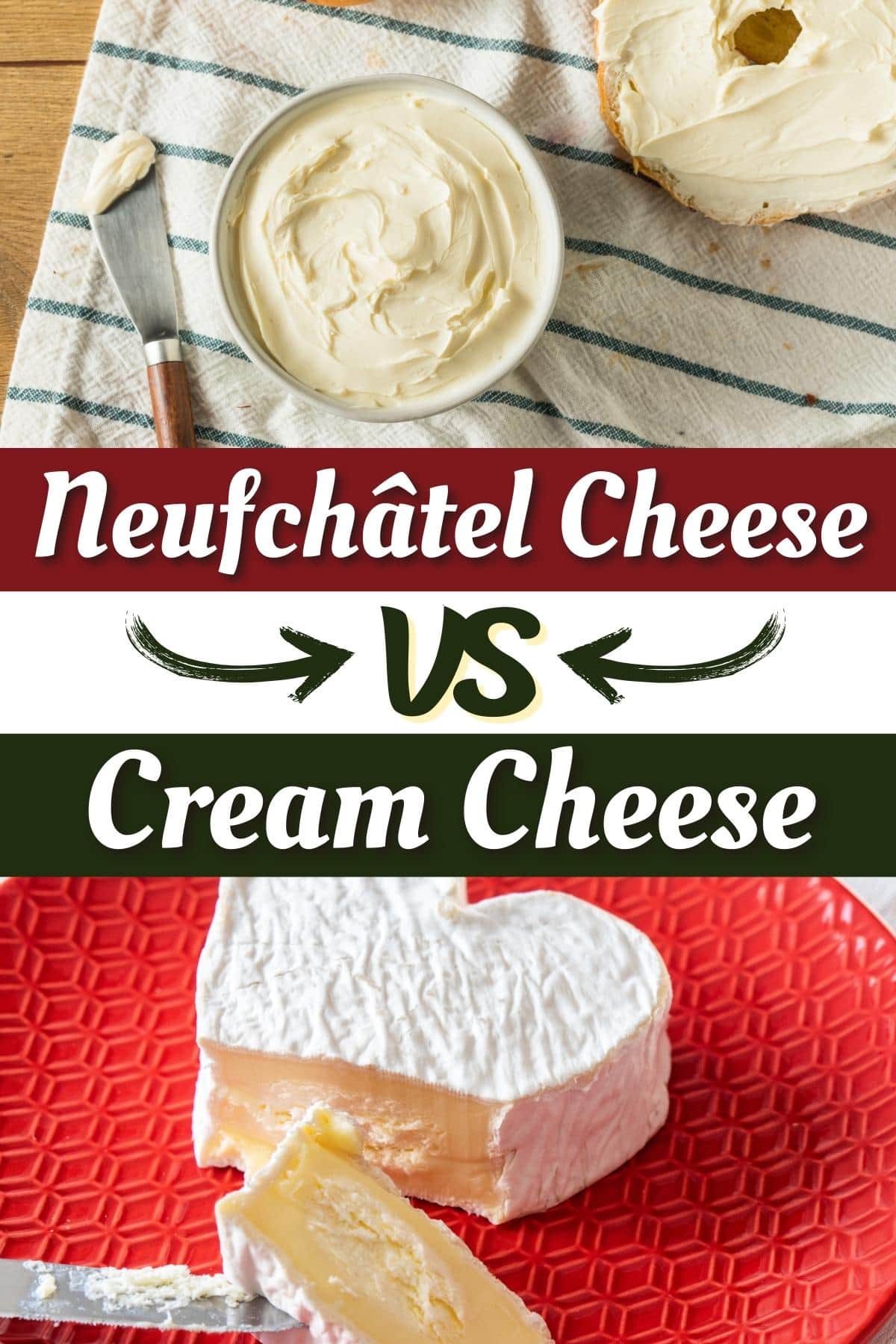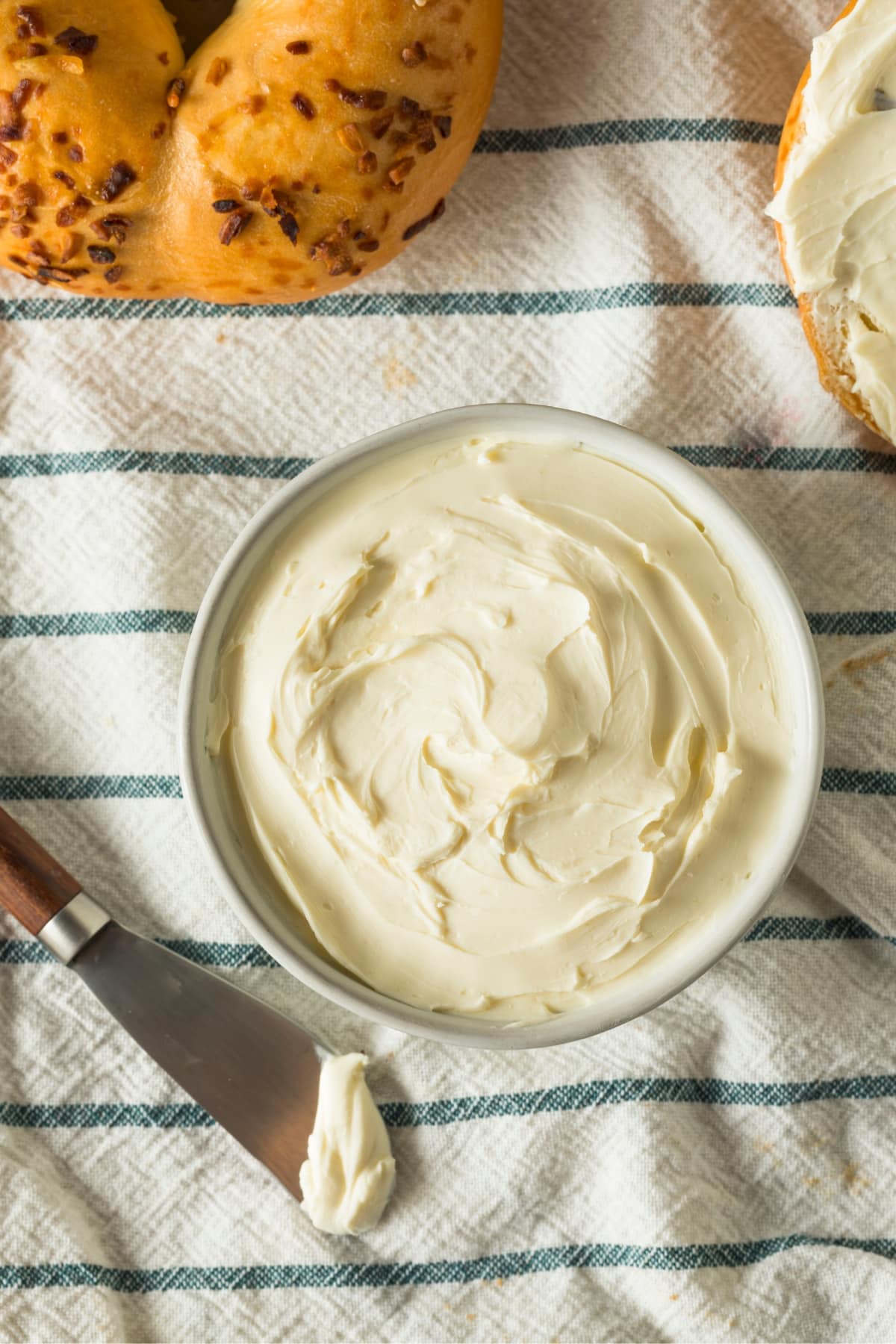Neufchâtel cheese and cream cheese are both soft, creamy cheeses, but they have distinct differences.
Neufchâtel is typically made from cow’s milk. It has a slightly tangier and less creamy texture than cream cheese. It often contains less fat and fewer calories.

Cream cheese is richer and creamier due to its higher fat content.
While the two cheeses share a similar appearance, their flavors, textures, and culinary uses differ.
So, which one should you pick? Let’s unpuzzle the cheesy mystery, shall we?
Neufchâtel Cheese vs. Cream Cheese (What’s the Difference?)
While similar, Neufchâtel has more moisture and less fat than cream cheese. This leads to slight differences in taste and texture. Let’s take a closer look.
Origins
Neufchâtel is a French cheese from the town of Neufchâtel in Normandy. It’s one of the oldest cheeses in France, dating back to the 6th century.
In the Hundred Years’ War, local girls supposedly shaped the cheese into hearts for English soldiers.
Cream cheese is an American invention. In the late 1800s, New York dairyman William Lawrence bought a Neufchâtel factory. He tried to recreate the French cheese but added cream, creating cream cheese. His cheese, under the “Philadelphia Brand,” became a popular staple in many homes.
There is an American Neufchâtel, too, with fewer calories and more moisture than cream cheese.
Ingredients
French Neufchâtel is made from raw cow’s milk. It’s left to mature for 6 to 8 weeks, becoming a soft cheese.
Cream cheese is made by adding lactic acid to pasteurized milk and cream. This mixture forms curds. They’re heated and stabilized to create cream cheese.
Unlike Neufchâtel, cream cheese isn’t aged and has a shorter shelf life once opened.
Appearance
Neufchâtel and cream cheese appear similar. Both are soft, white, and smooth.
But Neufchâtel often comes in a heart shape, with other shapes like cylinders and squares also common.
Cream cheese is sold in blocks or tubs, but it’s easily spreadable at room temperature. It lacks a rind and is uniform throughout.
Taste
Neufchâtel and cream cheese have similar flavors, but there are distinct differences.
Neufchâtel boasts a tangier taste and a grainier texture. It also bears a subtle mushroom-esque aroma and flavor. It has a rich, nutty, and slightly yeasty taste, much like Camembert. Its edible rind has a pungent kick.
It’s often sold after maturing for 6 to 10 weeks. If matured even more, it gets smoother and more flavorful.
Cream cheese has a mild, slightly tangy flavor. Yet, its higher fat content due to added cream gives it a richer taste.
The American version of Neufchâtel is more like cream cheese than the French version. Always read the label before buying to avoid confusion.
Fat Content
Cream cheese contains 33% milk fat and no more than 55% moisture. On the flip side, Neufchâtel is purely milk-based and contains just 23% milk fat.
The American version of Neufchâtel also boasts fewer calories than cream cheese.
Uses
With its higher fat content, cream cheese works well in various recipes. It’s a crucial ingredient in cheesecake, bagel spreads, frostings, and more. It’s creamier, denser, and gives a sweeter flavor.
Neufchâtel has a tangier flavor. It’s also a soft cheese, used commonly in spreads, dips, and toppings.
But cream cheese is often preferred in cooked dishes because it’s smoother and sweeter. The high fat content makes it better suited for baking and sauce thickening.
In contrast, Neufchâtel won’t perform as well in cooked recipes because of its lower fat content. The outcome will be less creamy compared to when using cream cheese.
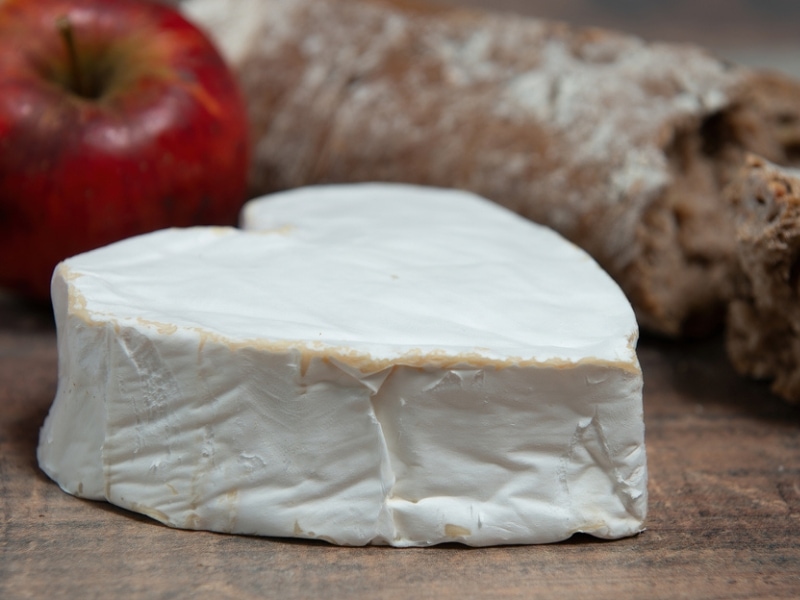
What Is Neufchâtel Cheese?
Neufchâtel cheese hails from the town of Neufchâtel in Normandy, France. It dates back to the 6th century. It’s France’s oldest cheese.
It’s a soft, unripened cow’s milk cheese. It develops a soft rind, much like Brie or Camembert. The cheese is often heart-shaped.
Neufchâtel is AOC-certified in France. This means its production is strictly regulated to maintain quality and authenticity. It’s similar to how Champagne and Prosecco are regionally protected.
In flavor, French Neufchâtel is salty and grows more pungent with aging. It’s spreadable and commonly used on crackers, bagels, bread, and dips or desserts.
In contrast, American Neufchâtel resembles cream cheese more than its French counterpart.
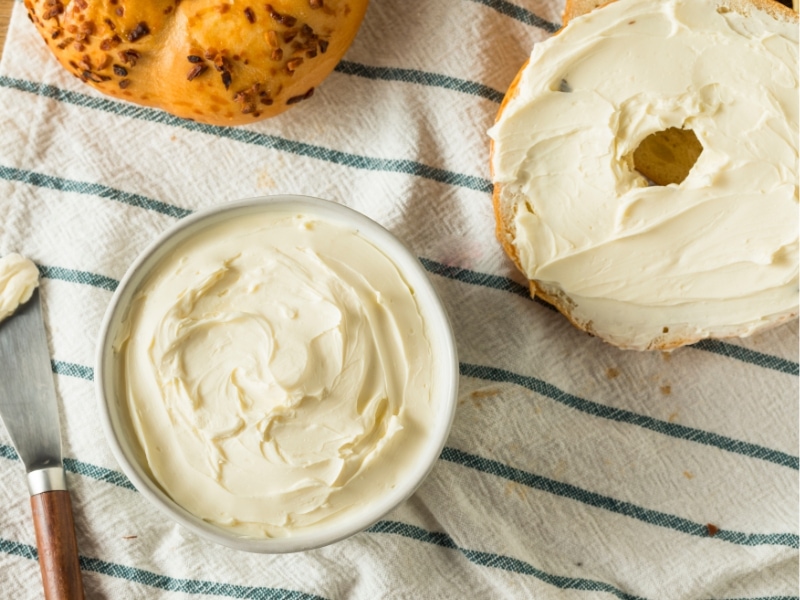
What Is Cream Cheese?
Cream cheese is a soft, spreadable, fresh cheese with a distinctive sweet and tangy flavor. Popular cream cheese brands include Philadelphia and Anchor.
Cream cheese dates back to the late 1800s in the United States. New York dairyman William Lawrence added cream to his Neufchâtel recipe. This resulted in the first cream cheese.
While you can argue that cream cheese is the American version of Neufchâtel, you can’t label it as such. That’s because it doesn’t come from France, the birthplace of Neufchâtel cheese.
Also, cream cheese doesn’t mature like Neufchâtel. Instead, it’s a fresh cheese meant for immediate consumption.
It’s the star in desserts like cheesecakes and red velvet sweets. It’s also great with bread or crackers and is often used in cooking.
Cream cheese can also replace other ingredients, like goat or cottage cheese, in a pinch.
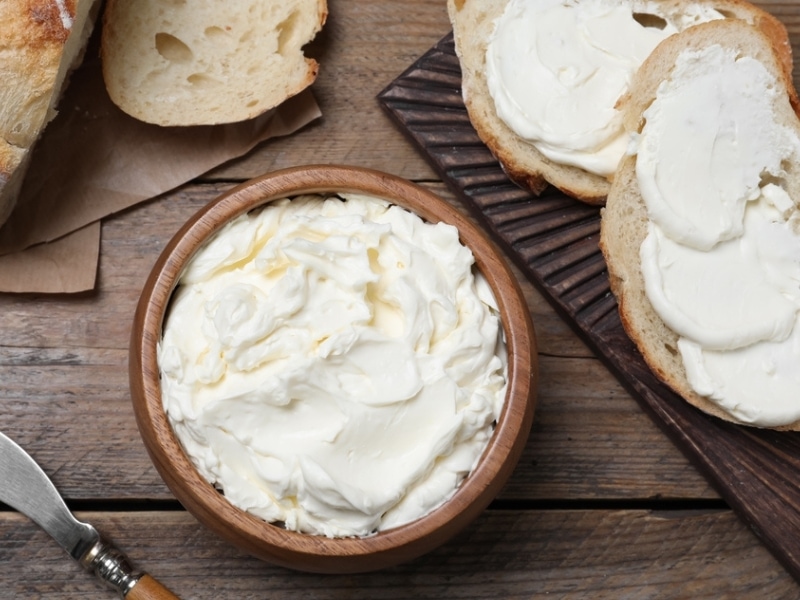
Can Neufchâtel and Cream Cheese Be Substituted for One Another?
Yes, Neufchâtel and cream cheese can be swapped for each other in recipes. Keep in mind, though, they have different fat contents, so it could alter your dish.
In some recipes, Neufchâtel can replace cream cheese in equal parts. It works great in dishes that stay cold, like dips and spreads.
But Neufchâtel has less fat than cream cheese, so it doesn’t melt as smoothly as cream cheese does.
When used in baked goods, though, Neufchâtel can give the finished product a grainy texture. It’ll also be less rich.
So for a baked good recipe needing cream cheese’s richness, try adding milk or cream to Neufchâtel for a similar fat level.
